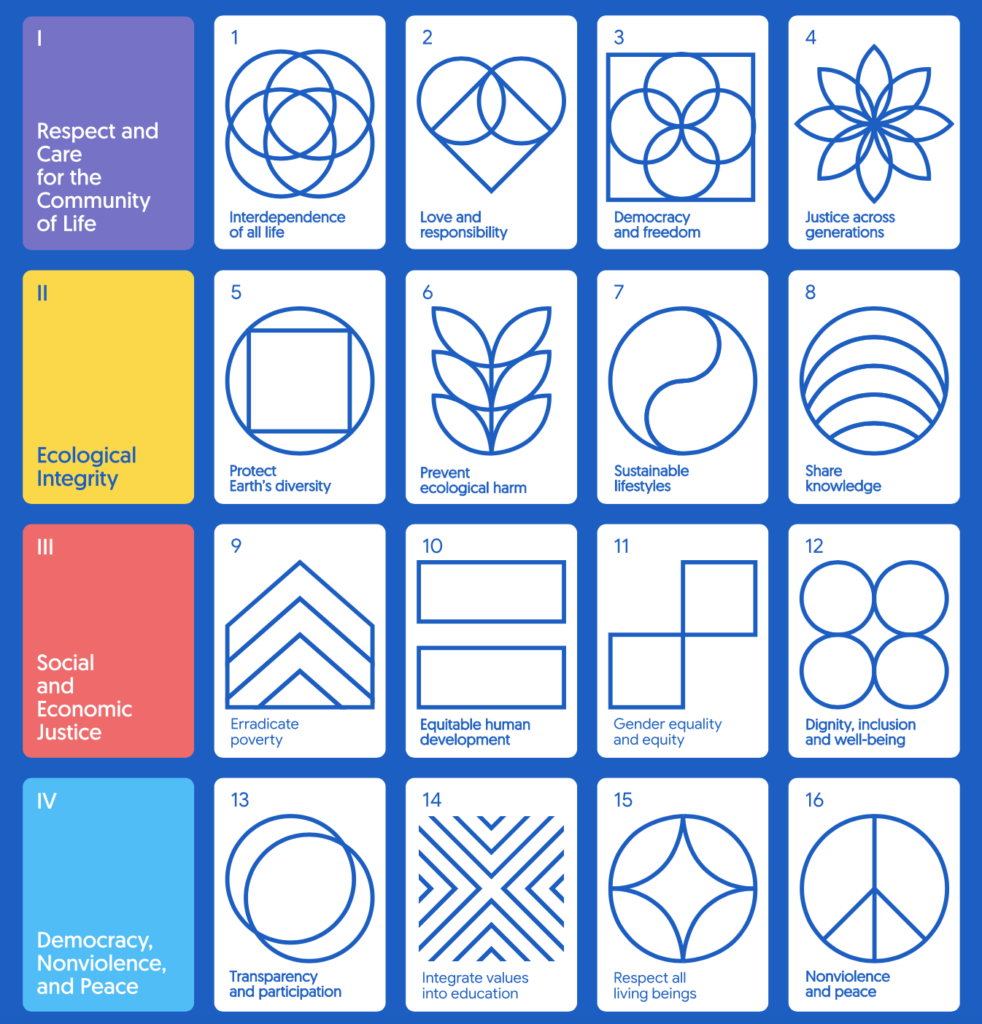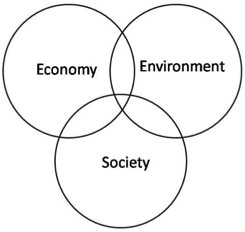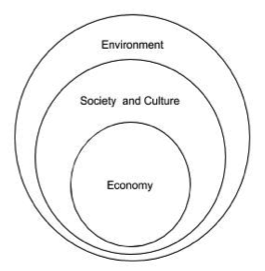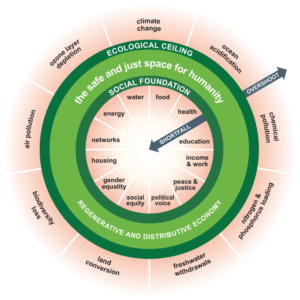Meeting the needs of the present without compromising the ability of future generations to meet their own needs
The concept of sustainability has shaped the development of STARS and is fundamental to the rating system. AASHE defines sustainability in a pluralistic and inclusive way, encompassing human and ecological health, social justice, secure livelihoods, and a better world for all generations. STARS attempts to translate this broad and inclusive view of sustainability to measurable objectives at the campus level. Thus, it includes performance indicators related to, for example, ecological integrity, social and economic justice, and democratic governance.
Indigenous Perspectives
Before exploring popular definitions and predominantly Western models of sustainability, it is important to note that Indigenous peoples practiced sustainability long before the term existed and that Indigenous and local knowledge – the understandings, skills and philosophies developed by societies with long histories of interaction with their natural surroundings – are often essential in addressing sustainability challenges.
The Bruntland Commission
One of the most popular definitions of sustainability is actually a definition of sustainable development. It is from Our Common Future: The Report of the World Commission on Environment and Development (1987), commonly known as the Brundtland Commission Report:
1. Sustainable development is development that meets the needs of the present without compromising the ability of future generations to meet their own needs. It contains within it two key concepts:
– the concept of ‘needs’, in particular the essential needs of the world’s poor, to which overriding priority should be given; and
– the idea of limitations imposed by the state of technology and social organization on the environment’s ability to meet present and future needs.
2. Thus the goals of economic and social development must be defined in terms of sustainability in all countries […]
3. […] Physical sustainability cannot be secured unless development policies pay attention to such considerations as changes in access to resources and in the distribution of costs and benefits. Even the narrow notion of physical sustainability implies a concern for social equity between generations, a concern that must logically be extended to equity within each generation.
The interconnectedness and interdependence of the social, environmental, and economic components of sustainability are included throughout Our Common Future. The Brundtland Commission writes, “Our inability to promote the common interest in sustainable development is often a product of the relative neglect of economic and social justice.” The report continues, “A world in which poverty and inequity are endemic will always be prone to ecological and other crises. Sustainable development requires meeting the basic needs of all and extending to all the opportunity to satisfy their aspirations for a better life.”
The Earth Charter
To further advance the principles of sustainability, the Brundtland Commission called for a “universal declaration” of norms to promote sustainable development. This goal was realized with the Earth Charter (2000), a “global consensus statement on ethics and values for a sustainable future.” Developed over a period of ten years with extensive global consultation, the Earth Charter has been formally endorsed by thousands of organizations. The Earth Charter continues the Brundtland Commission’s understanding of the connections between social justice, environmental welfare, and economic security.

Popular Representations
Today most uses of and references to sustainability emphasize the concept’s simultaneous environmental, social, and economic dimensions. For example, businesses talk about the triple bottom line: people, planet, and profits (or, alternately, human capital, natural capital, and financial capital). Likewise, sustainability educators commonly refer to the Three E’s of sustainability: economy, ecology, and equity.
Popular representations of sustainability also underscore the concept’s three dimensions. Sustainability experts often use a three-legged stool as a symbol for sustainability. The social, economic, and environmental components each represent one of the stool’s legs. If one of the legs is missing, the sustainability stool can’t balance or function. A common illustration of sustainability is the diagram below depicting three overlapping circles representing environmental needs, economic needs, and social needs. The area where the circles overlap and all three needs are met is the area of sustainability.

Similarly, sustainability is often depicted as three concentric circles to further emphasize the interdependence of the three dimensions – the economic existing within the social/cultural, and both existing within the environment.

A more recent representation of sustainability that is rooted in ecological economics is the “Doughnut”. According to the Doughnut Economics Action Lab (DEAL), “the Doughnut consists of two concentric rings: a social foundation, to ensure that no one is left falling short on life’s essentials, and an ecological ceiling, to ensure that humanity does not collectively overshoot the planetary boundaries that protect Earth’s life-supporting systems. Between these two sets of boundaries lies a doughnut-shaped space that is both ecologically safe and socially just: a space in which humanity can thrive”.
United Nations Sustainable Development Goals
In 2015, the United Nations published Transforming our world: the 2030 Agenda for Sustainable Development, a “plan of action for people, planet and prosperity”. The publication outlines 17 Sustainable Development Goals (SDGs) and 169 targets, and seeks to build on previous efforts by outlining a 15-year agenda that balances “the three dimensions of sustainable development: the economic, social and environmental”.
![]()

